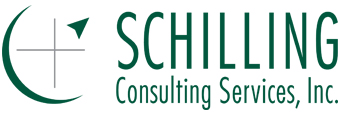Get a Glimpse of the Next Service or Product with Focus Groups
In Focus Groups, we are usually asking questions about a current product or service or one that is in development. However, they can be an effective tool for learning more about what unmet needs and wants your customers may have. Going further, they can help you and your customers begin to identify needs and wants they will have, in the future. Think for a moment how valuable it would be to understand emerging and even future customer needs now, giving you the lead time you need for product development, refinement, and introduction to market. Want to stay ahead of the customer need curve? Here’s how Focus Groups can help.
The Right Tool: A Focus Group is a unique and powerful Listening Post. There are many other Listening Posts (ways to hear from customers), such as surveys, interviews, comment cards, and advisory panels. Each has strengths and weaknesses and so each works best in different situations. Some are designed for qualitative research while others work well for quantitative research. Focus Groups are designed for obtaining qualitative information and are unique in the nature and depth of information they can provide. By working with a small group of people (as opposed to interviewing just one at a time), it is possible to facilitate a dialogue among participants where they react to and build on each other comments. This leads to a deeper level of insight and more detailed articulation of thoughts and ideas on a given topic. You can read more about Focus Groups and other Listening Posts on my web site.
The Right Questions: The key element of a Focus Group is the prepared set of questions that will be asked by the Moderator. The research goal behind most Focus Groups is to obtain customer knowledge about a current service or product, and they can be helpful at all stages of a service or product life cycle. In the design stage, they can help you learn more about key customer requirements and drivers of satisfaction. During product refinement, they can provide feedback about the appeal of a prototype or specific design features. As you approach service introduction or product launch, they can be invaluable in the design and finalization of marketing strategies and campaigns, focusing on key messaging and perceptions regarding both mediums and message. With existing services and products, they are often used to gain a deeper understanding of what customers like the most, what disappoints them, and what else they would like to see, and why. In short, the research objectives drive the nature of the questions.
This opens up another possibility that I have started to see incorporated into the research objectives, and therefore the line of questioning, in more and more Focus Groups. That is, to find out what customers may want next. Asking customers several open-ended questions about what other products or services would be of interest, and how the sponsoring organization could be of more help to them, is not without challenges. It can take time to get the group into a productive conversation and not all ideas may prove that helpful. However, a good dialogue invariably leads to the identification at least several possibilities, sometimes to the surprise and delight of the participants themselves as they begin to clarify and articulate a true want or need that they may not have thought much about until that moment.
The Right Answer: This kind of information can be the beginning, not the end, of new service or product development. It would be important to add other kinds of research and information to the Focus Group findings, all part of the innovation and product/service development process. However, beginning that process with customer knowledge, obtained directly from customers, is always a good place to start. Keeping a continued focus on these early customer thoughts and then adding research and development will lead to a service or product that is designed to meet an emerging customer need.
Customer needs, wants, and expectations are changing rapidly, fueled by the emergence of e-commerce, the growing influence of millennials, mass customization, and other megatrends. For example, think about how the e-commerce innovator and giant, Amazon, is influencing expectations around price and availability. (For an appetizer on this subject, check out this short article recommended to me by my good friend and marketing whiz, Deidra McClelland). Rather than trying to keep up with customer interests, maybe it’s time to get ahead of them. If you would like to leverage Focus Groups to learn about what your customers will want next, or to fulfill other research objectives, contact me at your convenience.
Jeff

